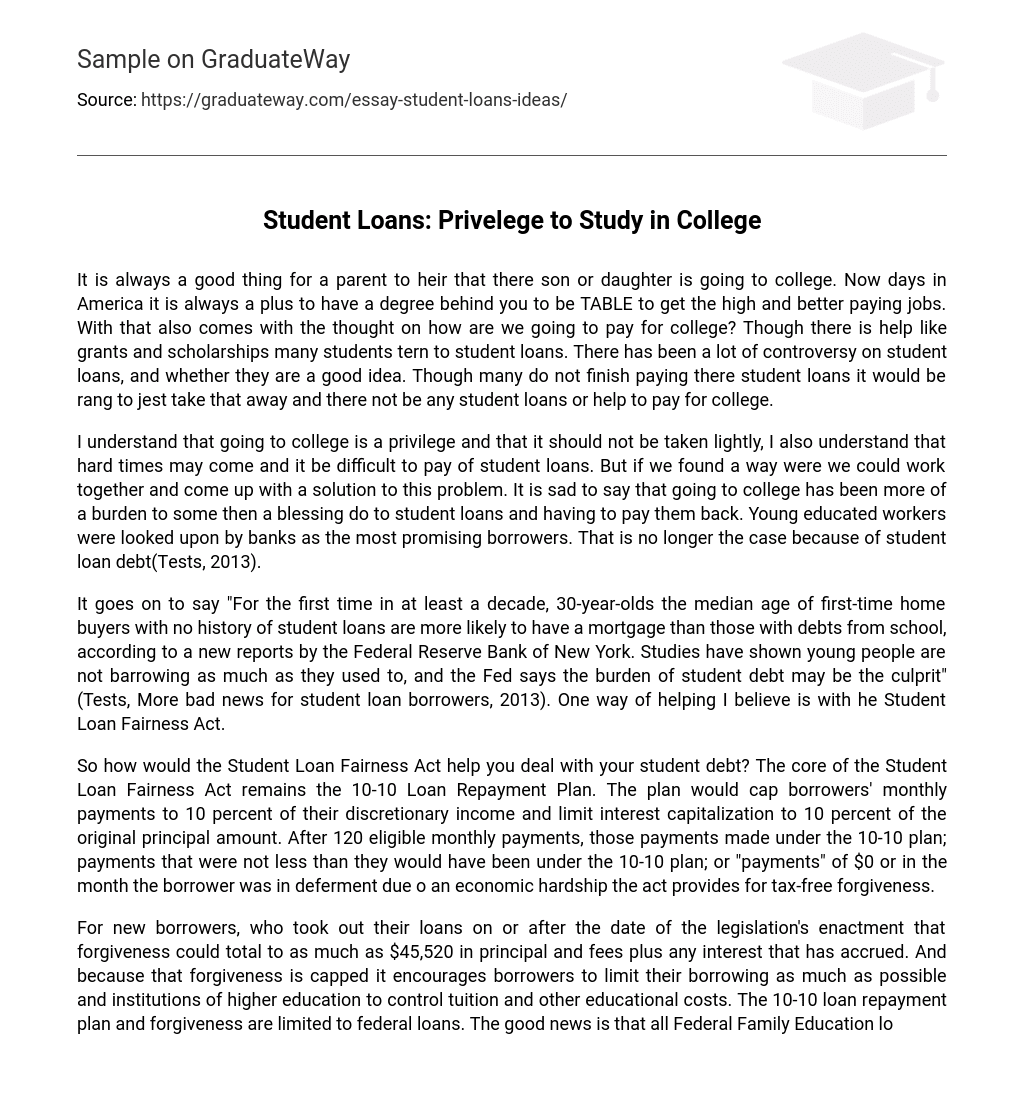It is always a good thing for a parent to heir that there son or daughter is going to college. Now days in America it is always a plus to have a degree behind you to be TABLE to get the high and better paying jobs. With that also comes with the thought on how are we going to pay for college? Though there is help like grants and scholarships many students tern to student loans. There has been a lot of controversy on student loans, and whether they are a good idea. Though many do not finish paying there student loans it would be rang to jest take that away and there not be any student loans or help to pay for college.
I understand that going to college is a privilege and that it should not be taken lightly, I also understand that hard times may come and it be difficult to pay of student loans. But if we found a way were we could work together and come up with a solution to this problem. It is sad to say that going to college has been more of a burden to some then a blessing do to student loans and having to pay them back. Young educated workers were looked upon by banks as the most promising borrowers. That is no longer the case because of student loan debt(Tests, 2013).
It goes on to say “For the first time in at least a decade, 30-year-olds the median age of first-time home buyers with no history of student loans are more likely to have a mortgage than those with debts from school, according to a new reports by the Federal Reserve Bank of New York. Studies have shown young people are not barrowing as much as they used to, and the Fed says the burden of student debt may be the culprit” (Tests, More bad news for student loan borrowers, 2013). One way of helping I believe is with he Student Loan Fairness Act.
So how would the Student Loan Fairness Act help you deal with your student debt? The core of the Student Loan Fairness Act remains the 10-10 Loan Repayment Plan. The plan would cap borrowers’ monthly payments to 10 percent of their discretionary income and limit interest capitalization to 10 percent of the original principal amount. After 120 eligible monthly payments, those payments made under the 10-10 plan; payments that were not less than they would have been under the 10-10 plan; or “payments” of $0 or in the month the borrower was in deferment due o an economic hardship the act provides for tax-free forgiveness.
For new borrowers, who took out their loans on or after the date of the legislation’s enactment that forgiveness could total to as much as $45,520 in principal and fees plus any interest that has accrued. And because that forgiveness is capped it encourages borrowers to limit their borrowing as much as possible and institutions of higher education to control tuition and other educational costs. The 10-10 loan repayment plan and forgiveness are limited to federal loans. The good news is that all Federal Family Education loans, known as FEEL, and Federal Direct loans would be eligible and the bill makes the 10-10 plan the default repayment plan for borrowers. This would greatly simplify for borrowers what is now a complicated and cumbersome process for selecting a repayment plan. The even better news is that the legislation would allow borrowers a year in which to convert private loans into a Federal Direct loan. To be eligible for this conversion, borrowers must have been eligible for a federal loan at the time they took out their private loans and have a gross income less than their total educational debt.





